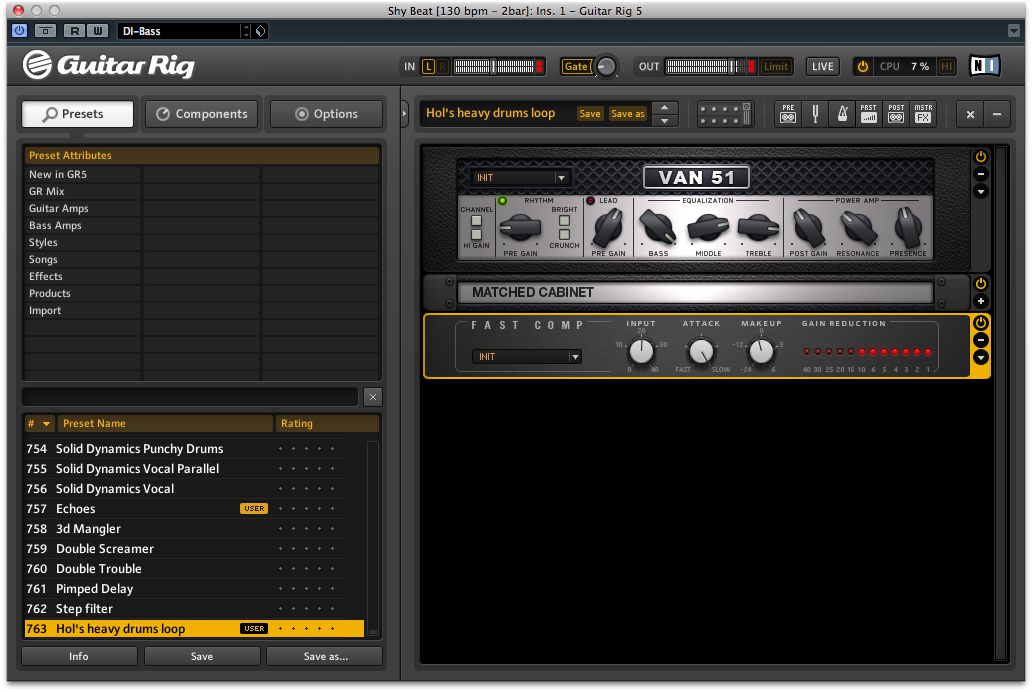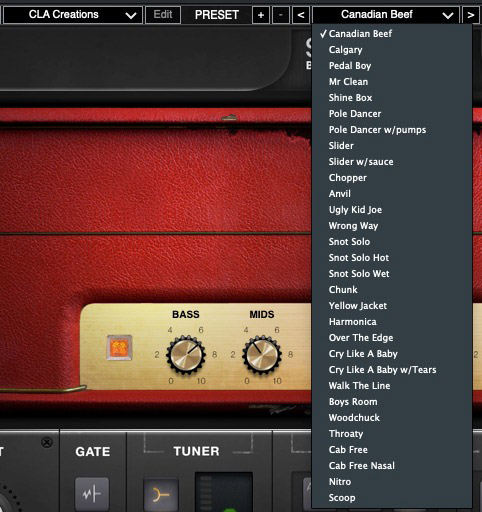
Then your main presets are built up with ‘studio rack’ like modules, which contain everything from your tuner, virtual amps, cabinets, and effects.

Essentially, you choose your factory presets and virtual components from the column on the left-hand side of the main window. Guitar Rig 6 has taken this further and it looks even more friendly than before. I find it very well laid out and simple to navigate.

If you have never used Guitar Rig then you will probably enjoy its ultra-clean user interface. At one point, I even went out and got myself a Rig Kontroller pedal and ran my virtual guitar rig via that. I’m a Mac/Logic Pro user predominantly and so I always use programs like Guitar Rig within my DAW, although you can also use them as standalone. A little background on my experience with the software and usage: I’ve been using Guitar Rig since its very first iteration, and for a number of years, it was my go to virtual guitar setup in my DAW. REV DI versions presets and sequences will have to be made while an AMP simulator (Guitar Rig, Bias Amp, Amplitube etc.) is added after Riffendium, and of course it would be impossible for us to foresee which amp simulator each user owns, and how he intends to use it, and consequently do all presets for each possible choice.Ĭustom presets for all REV DI version will have to be made by the user.Native Instruments kindly sent me a copy of the new Guitar Rig 6 software so that I could review it and give you my first impressions. For the REV versions specifically, the resulting preset parameters are heavily dependent on the the starting sampled sound (amp, crunch, distortion etc…) and the sequences which include reversed sounds are composed while hearing the resulting sound and all the pieces of the puzzle are quite intertwined. The reason is: in all others Riffendium versions the parameters for each preset are set taking in consideration what Guitar Amp is used and what effect is added to it.

At the moment, Riffendium REV DI comes without presets.


 0 kommentar(er)
0 kommentar(er)
